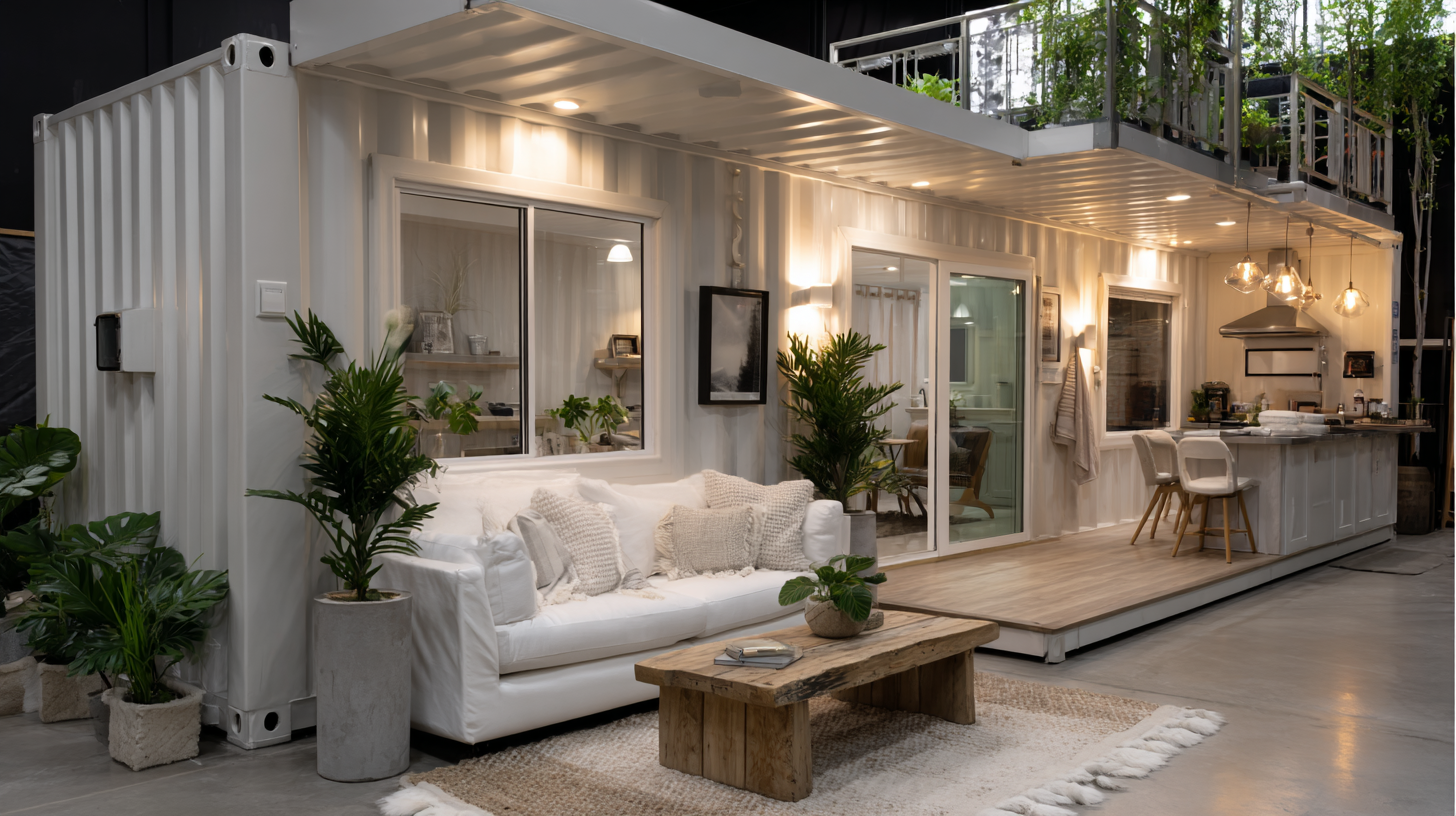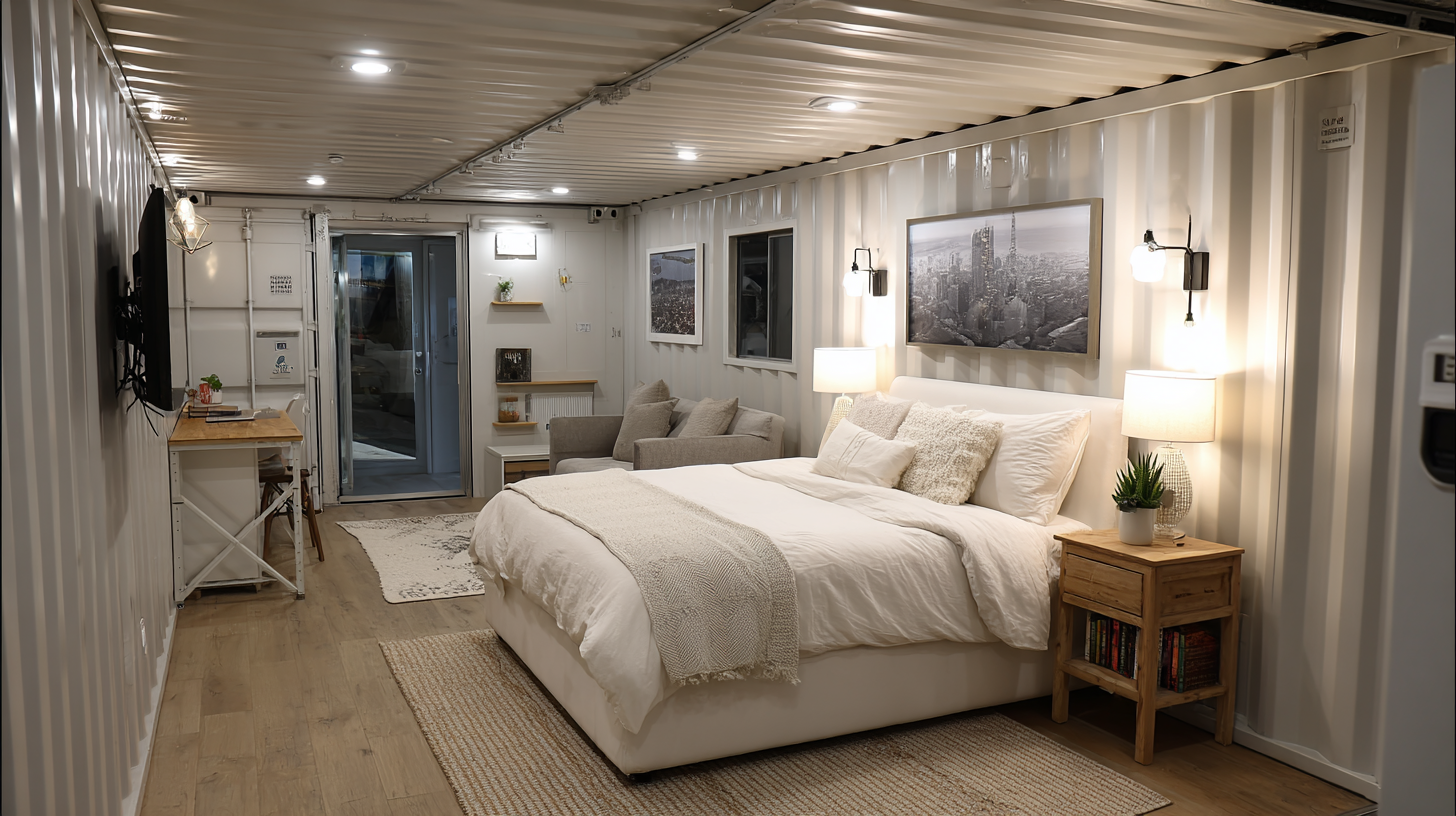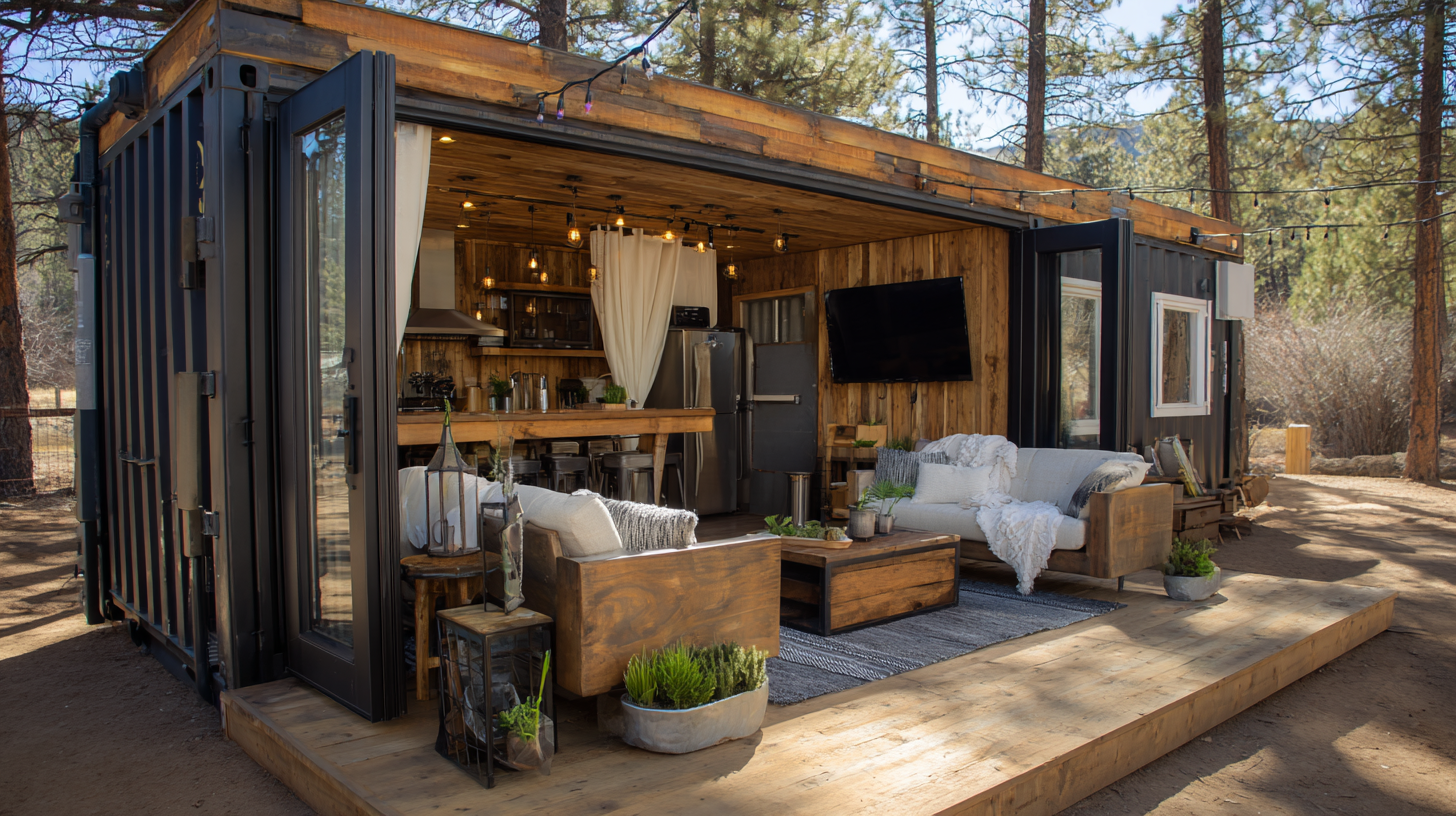How a 40ft Container Cabin Can Transform Your Living Space into an Ecofriendly Haven
As urbanization continues to surge, innovative housing solutions like the 40ft container cabin are emerging as viable options for eco-conscious living. The global demand for sustainable living spaces has been projected to grow significantly, with a report by Grand View Research estimating the green building market to reach $364.6 billion by 2022. Container homes not only minimize environmental impact through the repurposing of materials but also offer efficient, modular living spaces that can be tailored to diverse needs. In addition, the construction of a 40ft container cabin generates up to 60% less waste compared to traditional building methods, making it a compelling choice for those looking to reduce their carbon footprint. Through the adoption of such ecofriendly structures, individuals can transform their living spaces into havens of sustainability and creativity, aligning with modern values of environmental stewardship and innovative design.

Innovative Design: How 40ft Container Cabins Maximize Space and Functionality
In an era where sustainability and efficient use of space are paramount, 40ft container cabins present an innovative solution for modern living. These cabins are cleverly designed to maximize functionality while minimizing environmental impact. The modular structure of shipping containers allows for versatile layouts, ensuring that every inch is effectively utilized. Large windows can be integrated to invite natural light, creating a bright and uplifting atmosphere, while open-plan designs promote seamless living areas that can adapt to various needs.
Moreover, 40ft container cabins often come equipped with eco-friendly features that enhance their sustainability credentials. Rainwater harvesting systems, solar panels, and energy-efficient insulation can be incorporated, significantly reducing the carbon footprint of these living spaces. With clever storage solutions and multi-functional furniture, residents can enjoy a clutter-free environment that feels spacious despite the compact design. This refreshing approach to living not only offers a stylish aesthetic but also aligns with the growing demand for environmentally conscious housing options in today's society.
How a 40ft Container Cabin Can Transform Your Living Space into an Ecofriendly Haven
| Dimension | Detail |
|---|---|
| Length | 40 ft (12.19 m) |
| Width | 8 ft (2.44 m) |
| Height | 9.5 ft (2.89 m) |
| Usable Living Space | 320 sq ft (29.73 sq m) |
| Eco-friendly Features | Solar Power, Recycled Materials, Energy Efficient Insulation |
| Cost Efficiency | Lower than traditional housing options |
| Customizable Options | Layouts, Interior Design, Exterior Finishes |
| Transportability | Easily moved to different locations |
| Popularity | Increasing among minimalists and eco-conscious consumers |
Sustainable Living: Embracing Eco-Friendly Materials in Container Cabin Construction
Sustainable living is not just a trend; it’s a necessity for ensuring a healthier planet. Embracing eco-friendly materials in container cabin construction is essential for reducing our carbon footprint. When choosing materials, consider options like reclaimed wood, bamboo, and recycled steel. These materials not only minimize waste but also bring unique aesthetics to your cabin.
Tip: Always research the source of your materials to ensure they are sustainably harvested or manufactured. Consider local suppliers to reduce transportation emissions and support your community.
In addition to materials, think about integrating renewable energy solutions such as solar panels and rainwater harvesting systems. These features not only promote self-sufficiency but also lower utility costs in the long run.
Tip: When planning your container cabin, aim to maximize natural light and ventilation. This can reduce the need for artificial lighting and heating, creating a more energy-efficient living space.

Energy Efficiency: Creating a Green Home with Renewable Energy Solutions
Transforming a 40ft container cabin into an eco-friendly haven offers an exciting opportunity to embrace energy efficiency through renewable energy solutions. By integrating solar panels on the roof, homeowners can harness the sun's abundant energy, significantly reducing their reliance on traditional power grids. This setup can provide ample electricity for lighting, heating, and powering appliances, all while minimizing the carbon footprint. Additionally, using energy-efficient appliances and LED lighting can further enhance the sustainability of the living space, ensuring that every resource is utilized efficiently.
Incorporating rainwater harvesting systems can also complement the energy-efficient setup, allowing residents to collect and use rainwater for irrigation and other non-potable purposes. Paired with conservation practices, such as composting and utilizing greywater systems, the container cabin not only supports a reduced ecological footprint but also fosters a self-sufficient lifestyle. By making these conscious choices, individuals can create a harmonious living environment that prioritizes natural resources and sets a positive example for sustainable living.

Versatile Uses: Transforming Your Container Cabin for Different Lifestyles
Transforming a 40ft container cabin into an eco-friendly living space offers remarkable versatility, catering to a variety of lifestyles. According to a report by the International Finance Corporation (IFC), the global demand for sustainable housing solutions is projected to grow by 60% by 2030. A container cabin can be tailored to meet individual needs, whether it serves as a cozy home office, a rental unit, or a creative studio. The modular nature of container living allows occupants to reconfigure their space easily, making it suitable for everything from minimalistic living to family homes.
For those seeking mobility, container cabins can be equipped with solar panels and rainwater harvesting systems, considerably reducing their carbon footprint. Research from the Global Ecological Footprint Network indicates that the average person in a sustainable dwelling can reduce carbon emissions by up to 30%. This allows eco-conscious inhabitants to enjoy the benefits of modern living while contributing positively to the environment. Furthermore, with customizable interiors and the potential for off-grid living, container cabins emerge as a feasible option for a diverse range of lifestyles that prioritize sustainability and adaptability.
Transforming Living Spaces: Versatile Uses of 40ft Container Cabins
Aesthetic Appeal: Personalizing Your Container Cabin for Unique Style and Comfort
The rise of container cabins presents an innovative solution for those looking to personalize their living spaces while embracing sustainability. These versatile structures can be transformed into stylish homes, offering a unique blend of aesthetic appeal and eco-friendliness. By integrating natural materials and thoughtful design, you can create a cozy atmosphere that reflects your personal style.
**Tips for Personalizing Your Container Cabin:**
1. **Incorporate Nature**: Use plants and natural wood finishes to enhance the cabin’s organic feel. Vertical gardens or potted plants can add life and warmth to your space.
2. **Unique Decor**: Select decor items that resonate with your personality. From handcrafted art pieces to vintage furniture, these additions can make the space truly yours.
As the global home decor market continues to grow, the demand for unique, personalized living spaces will only increase. Choosing eco-friendly options like container cabins is not only a stylish choice but also a step towards sustainable living. By focusing on individual expression through design, you can create an inviting haven that stands out in both form and function.
